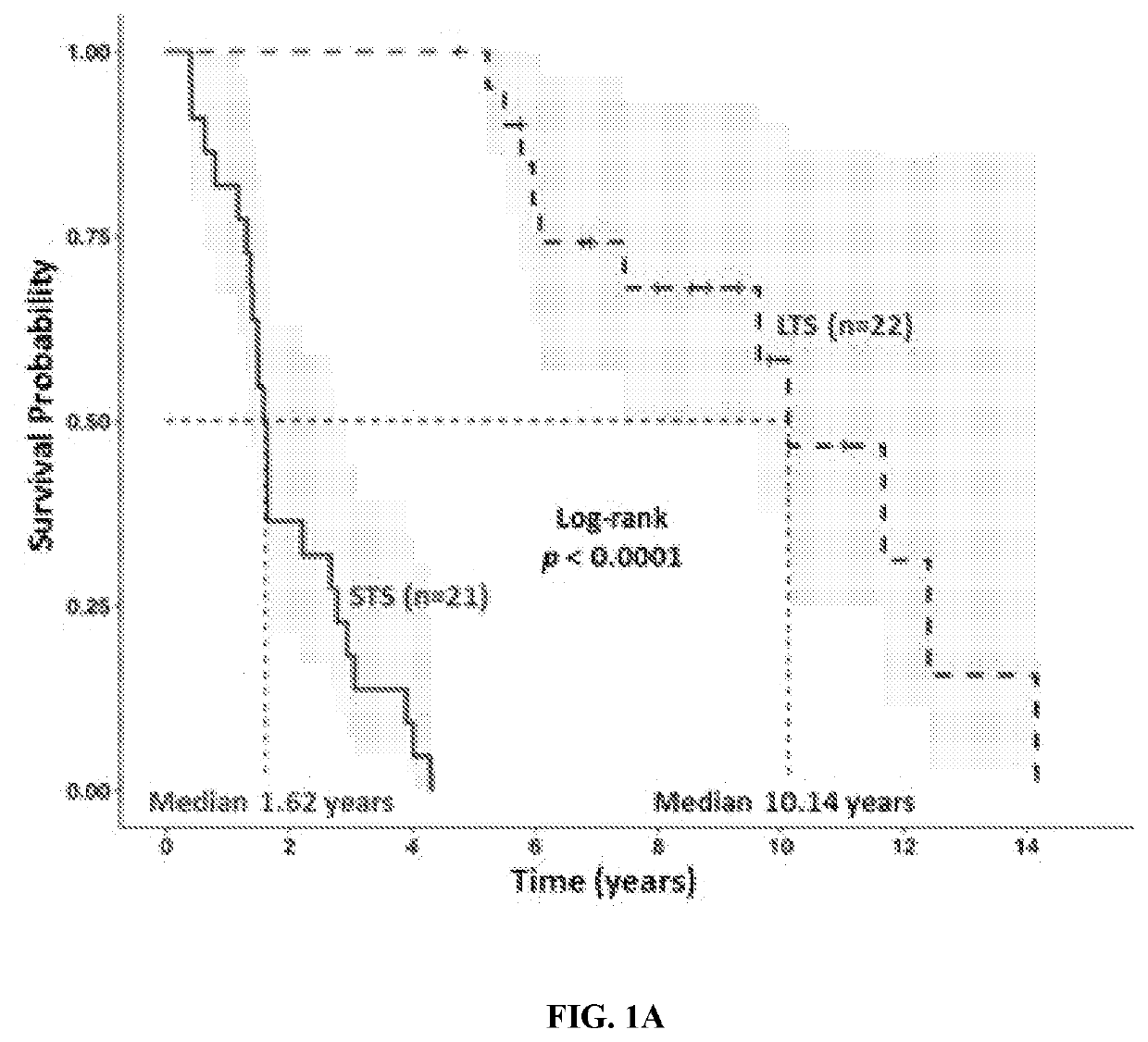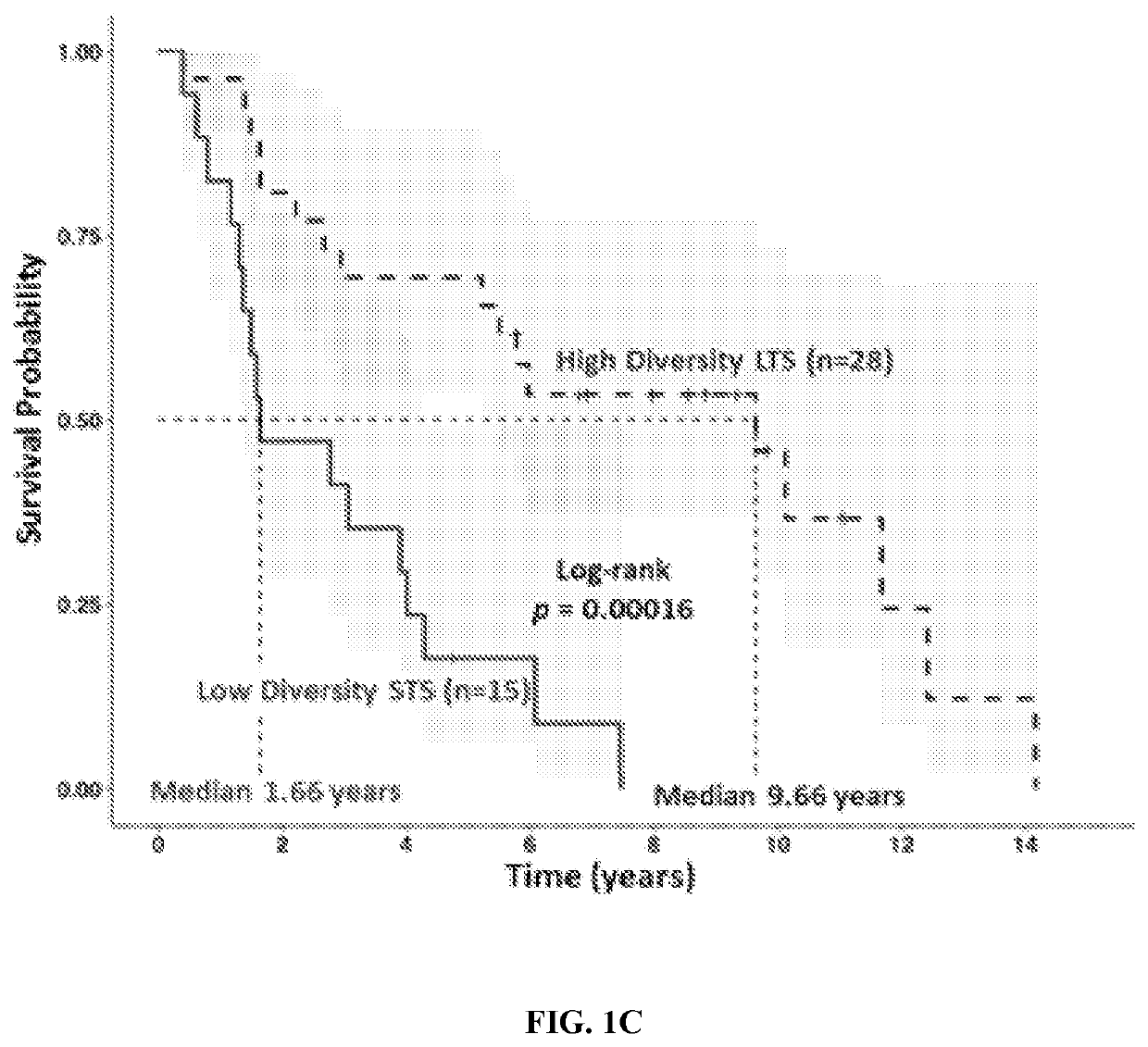Tumor microbiome signature and therapeutic use of fecal microbiota transplantation on pancreatic cancer patients
a technology of fecal microbiota and tumor microbiome, which is applied in the field of tumor microbiome signature and therapeutic use of fecal microbiota transplantation on pancreatic cancer patients, can solve the problems of significant unmet needs, incomplete study of human pdac microbiome that contributes favorably or adversely to the natural history of pancreatic cancer, and inability to demonstrate significant genomic differences. to achieve the effect of modulating the immune system and affecting the tumor
- Summary
- Abstract
- Description
- Claims
- Application Information
AI Technical Summary
Benefits of technology
Problems solved by technology
Method used
Image
Examples
example 1
and Methods
[0125]Human samples. First, a discovery cohort of patients with long-term survivors PDAC (>5-years overall survival, median survival 9.5 years, called LTS, n=21) was compared with stage-matched PDAC patients who survive less than 5 years (median survival 1.6 years, called STS, n=22) from University of Texas MD Anderson Cancer Center (MDACC). Detailed clinical and pathologic information on the patients is presented in Table 1. A second validation cohort with long-term survivors of similar characteristics of survival (>5-years overall survival, n=15) compared with stage-matched regular PDAC patients who survive less than 5 years (n=10), from Johns Hopkins Hospital (JHH) (Baltimore, Md.). Archived formalin-fixed paraffin-embedded (FFPE) tumor specimens obtained from patients who underwent surgical resection with curative intent were collected from the University of Texas MD Anderson Cancer Center (Houston, Tex.) and Johns Hopkins Hospital (Baltimore, Md.). The staging of dis...
example 2
robial Diversity is Associated with Better Outcomes in Resected PDAC Patients
[0139]To explore the role of the human tumor microbiome composition in mediating clinical outcomes of PDAC patients, a discovery cohort was used to compare surgically resected patients who survived more than 5 years post-surgery, or long-term survivors (LTS, median survival 10.1 years), to stage-matched short-term survivors who survived less than 5 years post-surgery (STS, median survival 1.6 years) from UT MD Anderson Cancer Center (MDACC) in Houston, Tex. (FIG. 1A and Table 1). Patients in LTS and STS groups were similar with respect to age, gender, stage, and prior therapies, including antibiotic use and neoadjuvant or adjuvant treatments (Table 2). Then, a validation cohort with similar survival characteristics from Johns Hopkins Hospital (JHH) in Baltimore, Md. was used. Bacterial DNA was extracted from 68 surgically resected PDAC tumor (36 LTS and 32 STS) and taxonomic profiling via 16S rRNA gene sequ...
example 3
robiome Communities are Significantly Different Between LTS and STS
[0141]Considering the relationship between PDAC intra-tumoral bacterial diversity and overall survival, whether there were differences in the tumor microbiome composition between PDAC LTS and STS was next determined. To this end, the general landscape of the tumor microbiome on all patients from both cohorts was assessed, which revealed presence of similar communities (FIG. 2A). Then, enrichment of OTUs in LTS versus STS was compared, which revealed enrichment for specific bacterial communities in each group at the various taxonomic levels (FIGS. 9-11). When the influence of neoadjuvant and adjuvant therapies and antibiotics use in the MDACC cohort were evaluated, no significant differences were detected in the taxonomic composition at the order level (FIGS. 7A-C). To further investigate these findings, the discovery cohort was used to conduct high dimensional class comparisons using linear discriminant analysis of e...
PUM
 Login to View More
Login to View More Abstract
Description
Claims
Application Information
 Login to View More
Login to View More - R&D
- Intellectual Property
- Life Sciences
- Materials
- Tech Scout
- Unparalleled Data Quality
- Higher Quality Content
- 60% Fewer Hallucinations
Browse by: Latest US Patents, China's latest patents, Technical Efficacy Thesaurus, Application Domain, Technology Topic, Popular Technical Reports.
© 2025 PatSnap. All rights reserved.Legal|Privacy policy|Modern Slavery Act Transparency Statement|Sitemap|About US| Contact US: help@patsnap.com



